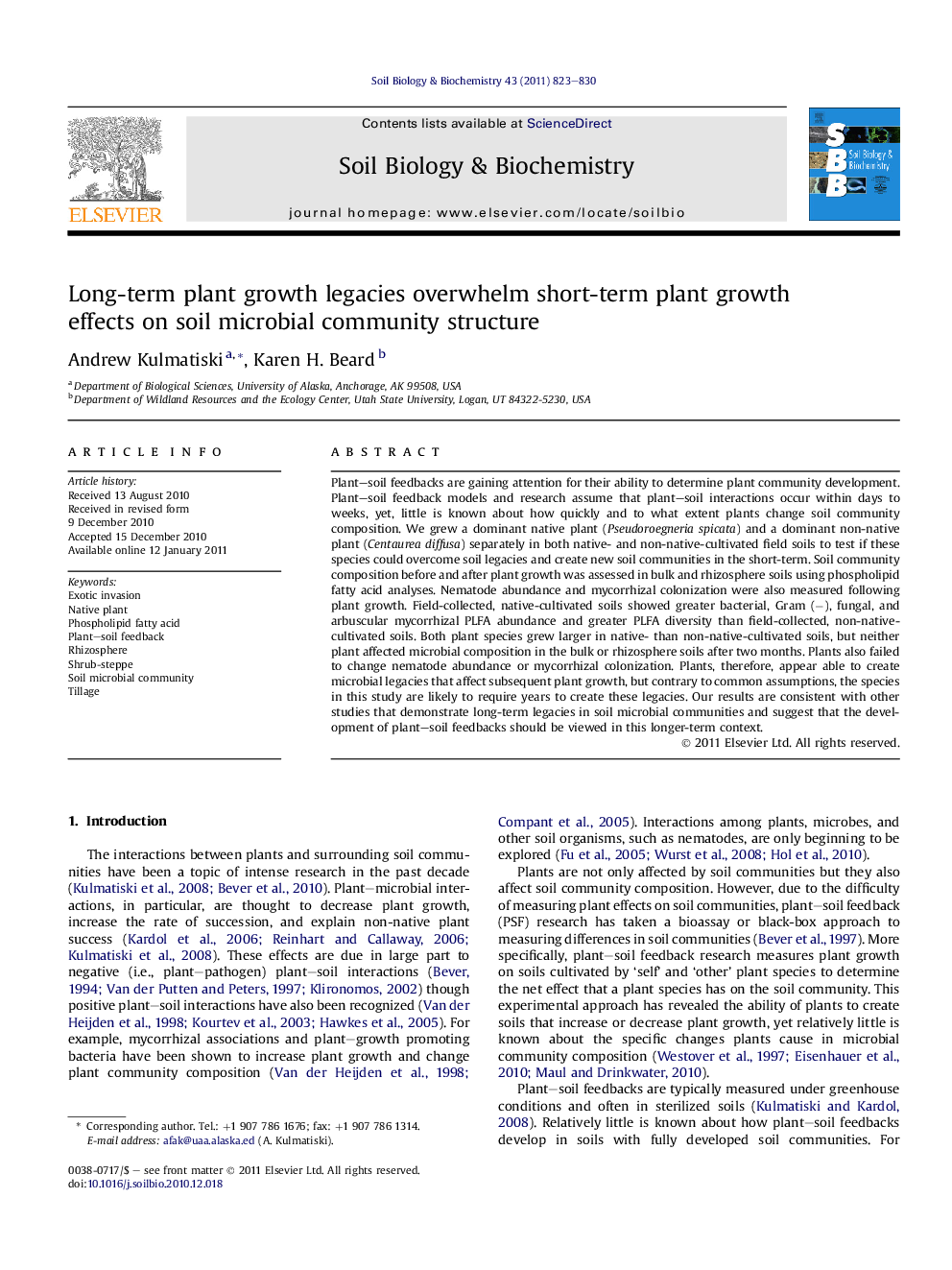| Article ID | Journal | Published Year | Pages | File Type |
|---|---|---|---|---|
| 2025461 | Soil Biology and Biochemistry | 2011 | 8 Pages |
Plant–soil feedbacks are gaining attention for their ability to determine plant community development. Plant–soil feedback models and research assume that plant–soil interactions occur within days to weeks, yet, little is known about how quickly and to what extent plants change soil community composition. We grew a dominant native plant (Pseudoroegneria spicata) and a dominant non-native plant (Centaurea diffusa) separately in both native- and non-native-cultivated field soils to test if these species could overcome soil legacies and create new soil communities in the short-term. Soil community composition before and after plant growth was assessed in bulk and rhizosphere soils using phospholipid fatty acid analyses. Nematode abundance and mycorrhizal colonization were also measured following plant growth. Field-collected, native-cultivated soils showed greater bacterial, Gram (−), fungal, and arbuscular mycorrhizal PLFA abundance and greater PLFA diversity than field-collected, non-native-cultivated soils. Both plant species grew larger in native- than non-native-cultivated soils, but neither plant affected microbial composition in the bulk or rhizosphere soils after two months. Plants also failed to change nematode abundance or mycorrhizal colonization. Plants, therefore, appear able to create microbial legacies that affect subsequent plant growth, but contrary to common assumptions, the species in this study are likely to require years to create these legacies. Our results are consistent with other studies that demonstrate long-term legacies in soil microbial communities and suggest that the development of plant–soil feedbacks should be viewed in this longer-term context.
Research highlights► Plants appear to require several years to cultivate typical microbial communities. ► Short-term plant growth fails to alter microbial structure. ► Rhizosphere soils were more similar to historic than current plant growth. ► Plant–soil feedback processes likely to be slower than thought.
